分类算法-逻辑回归与二分类
Posted 靠谱杨
tags:
篇首语:本文由小常识网(cha138.com)小编为大家整理,主要介绍了分类算法-逻辑回归与二分类相关的知识,希望对你有一定的参考价值。
分类算法-逻辑回归与二分类
1、逻辑回归的应用场景
- 广告点击率
- 是否为垃圾邮件
- 是否患病
- 金融诈骗
- 虚假账号
看到上面的例子,我们可以发现其中的特点,那就是都属于两个类别之间的判断。逻辑回归就是解决二分类问题的利器
2、 逻辑回归的原理
2.1 输入
逻辑回归的输入就是一个线性回归的结果,然后把这个结果映射到0-1之间。

2.2 激活函数
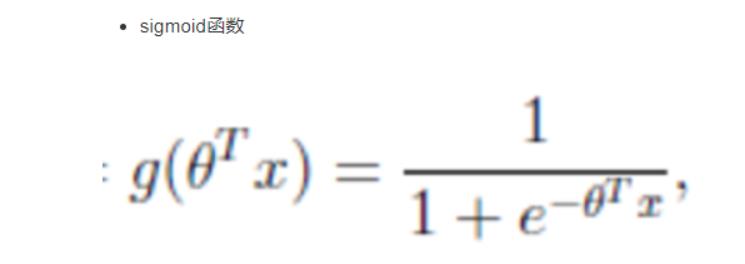
- 分析
- 回归的结果输入到sigmoid函数当中
- 输出结果:[0, 1]区间中的一个概率值,默认为0.5为阈值
逻辑回归最终的分类是通过属于某个类别的概率值来判断是否属于某个类别,并且这个类别默认标记为1(正例),另外的一个类别会标记为0(反例)。(方便损失计算)
输出结果解释(重要):假设有两个类别A,B,并且假设我们的概率值为属于A(1)这个类别的概率值。现在有一个样本的输入到逻辑回归输出结果0.6,那么这个概率值超过0.5,意味着我们训练或者预测的结果就是A(1)类别。那么反之,如果得出结果为0.3那么,训练或者预测结果就为B(0)类别。
2.3 损失以及优化
2.3.1 对数似然损失
逻辑回归的损失,称之为对数似然损失,公式如下:

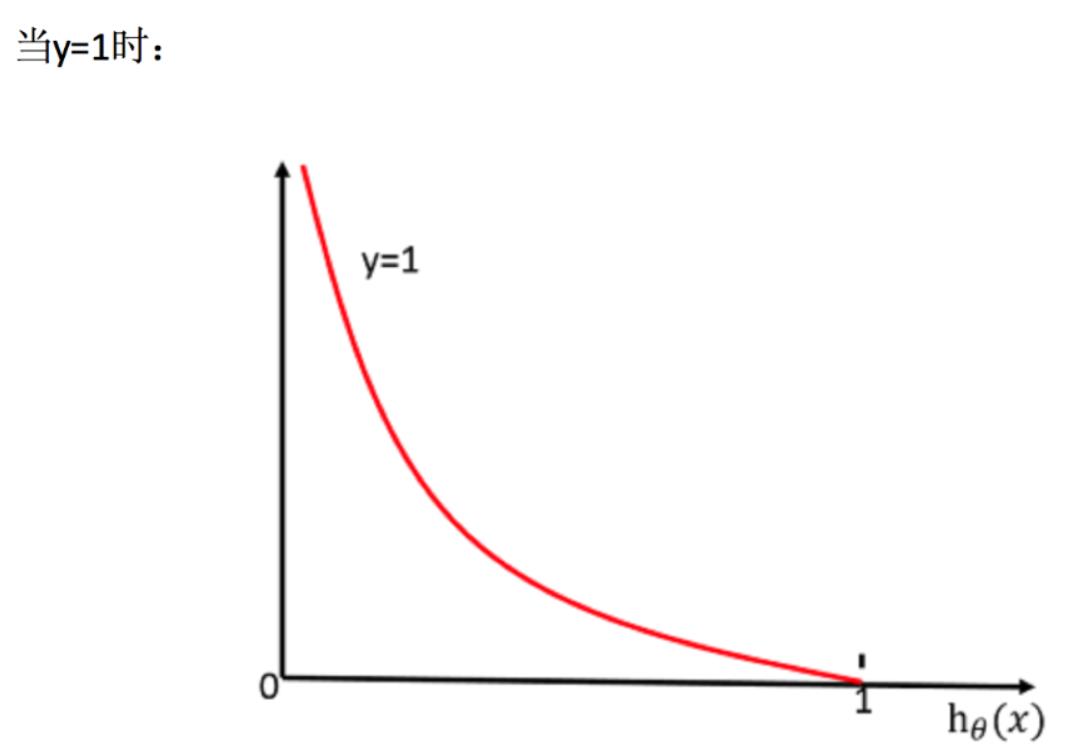

我们已经知道,log(P), P值越大,结果越小,所以我们可以对着这个损失的式子去分析
2.3.2 优化
同样使用梯度下降优化算法,去减少损失函数的值。这样去更新逻辑回归前面对应算法的权重参数,提升原本属于1类别的概率,降低原本是0类别的概率。
3、逻辑回归API
- sklearn.linear_model.LogisticRegression(solver=\'liblinear\', penalty=‘l2’, C = 1.0)
- solver:优化求解方式(默认开源的liblinear库实现,内部使用了坐标轴下降法来迭代优化损失函数)
- sag:根据数据集自动选择,随机平均梯度下降
- penalty:正则化的种类
- C:正则化力度
- solver:优化求解方式(默认开源的liblinear库实现,内部使用了坐标轴下降法来迭代优化损失函数)
默认将类别数量少的当做正例
LogisticRegression方法相当于 SGDClassifier(loss="log", penalty=" "),SGDClassifier实现了一个普通的随机梯度下降学习,也支持平均随机梯度下降法(ASGD),可以通过设置average=True。而使用LogisticRegression(实现了SAG)
4、 案例:癌症分类预测-良/恶性乳腺癌肿瘤预测
- 数据介绍
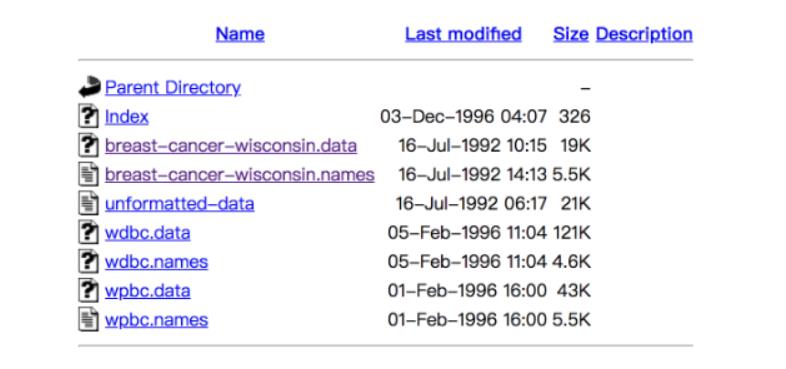
原始数据的下载地址:https://archive.ics.uci.edu/ml/machine-learning-databases/
数据描述
(1)699条样本,共11列数据,第一列用语检索的id,后9列分别是与肿瘤
相关的医学特征,最后一列表示肿瘤类型的数值。
(2)包含16个缺失值,用”?”标出。
4.1 分析
- 缺失值处理
- 标准化处理
- 逻辑回归预测
4.2 代码
def logisticregression():
"""
逻辑回归进行癌症预测
:return: None
"""
# 1、读取数据,处理缺失值以及标准化
column_name = [\'Sample code number\', \'Clump Thickness\', \'Uniformity of Cell Size\', \'Uniformity of Cell Shape\',
\'Marginal Adhesion\', \'Single Epithelial Cell Size\', \'Bare Nuclei\', \'Bland Chromatin\',
\'Normal Nucleoli\', \'Mitoses\', \'Class\']
data = pd.read_csv("https://archive.ics.uci.edu/ml/machine-learning-databases/breast-cancer-wisconsin/breast-cancer-wisconsin.data",
names=column_name)
# 删除缺失值
data = data.replace(to_replace=\'?\', value=np.nan)
data = data.dropna()
# 取出特征值
x = data[column_name[1:10]]
y = data[column_name[10]]
# 分割数据集
x_train, x_test, y_train, y_test = train_test_split(x, y, test_size=0.3)
# 进行标准化
std = StandardScaler()
x_train = std.fit_transform(x_train)
x_test = std.transform(x_test)
# 使用逻辑回归
lr = LogisticRegression()
lr.fit(x_train, y_train)
print("得出来的权重:", lr.coef_)
# 预测类别
print("预测的类别:", lr.predict(x_test))
# 得出准确率
print("预测的准确率:", lr.score(x_test, y_test))
return None
返回结果:
得出来的权重: [[1.52208964 0.07495703 0.81846456 0.74113955 0.14261545 1.06740282
1.19233134 0.70059655 0.69993072]]
预测的类别: [2 2 4 2 4 2 4 2 4 2 2 2 2 4 2 2 2 2 2 2 2 2 2 4 2 2 2 2 4 4 2 4 2 2 2 4 2
4 4 4 2 4 2 4 2 2 2 2 2 2 4 4 2 4 2 4 2 2 2 2 2 4 4 2 4 2 4 2 2 4 2 4 2 4
4 2 4 4 4 2 4 2 2 4 4 2 4 4 2 2 4 2 4 2 2 4 2 4 4 2 4 2 2 2 2 2 4 2 2 2 4
4 2 2 2 2 2 4 4 2 2 2 2 2 2 4 4 4 2 2 2 2 2 2 2 2 2 4 4 4 2 4 4 4 2 2 2 2
2 2 2 4 2 2 2 2 2 2 2 2 2 2 2 2 4 2 4 4 2 4 2 2 4 4 4 4 2 2 2 2 4 2 2 4 4
4 4 4 4 2 4 2 2 4 2 4 2 2 4 2 4 2 2 2 4]
预测的准确率: 0.9804878048780488
5、分类的评估方法
5.1 精确率与召回率
5.1.1混淆矩阵
在分类任务下,预测结果(Predicted Condition)与正确标记(True Condition)之间存在四种不同的组合,构成混淆矩阵(适用于多分类)
![image-20220404225416011]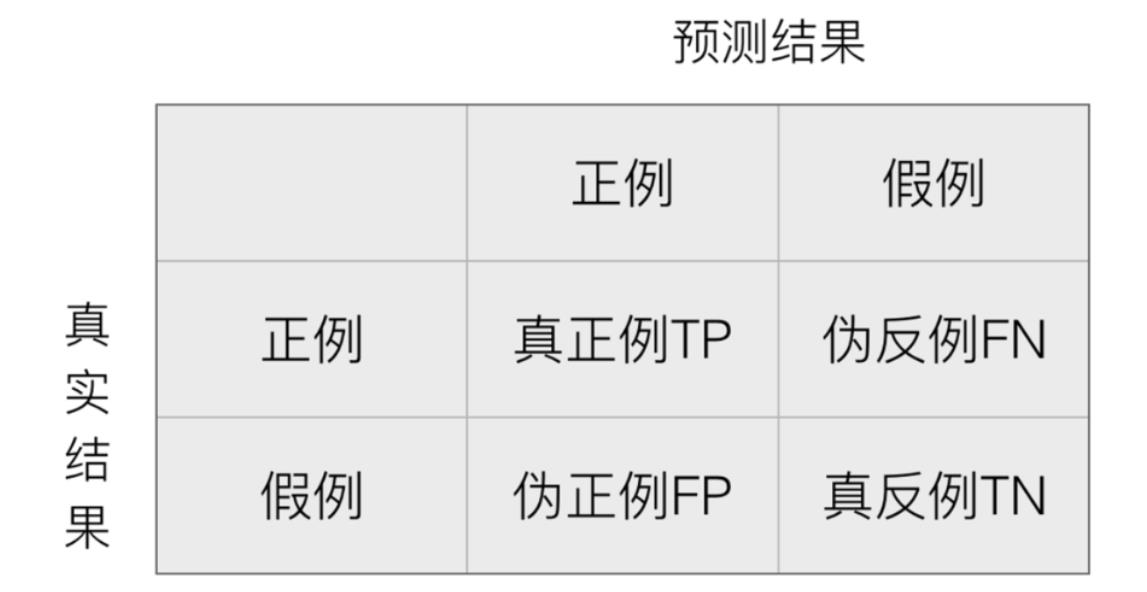
5.1.2 精确率(Precision)与召回率(Recall)
- 精确率:预测结果为正例样本中真实为正例的比例(了解)
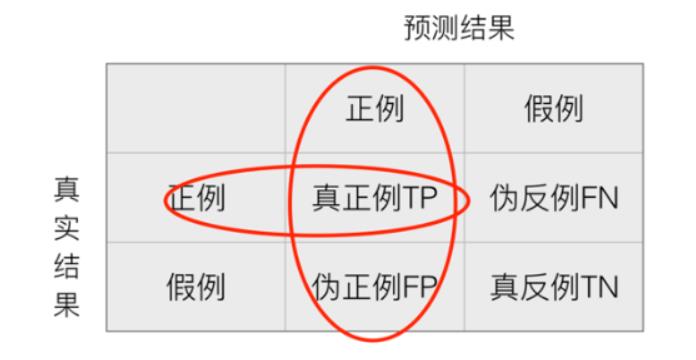
- 召回率:真实为正例的样本中预测结果为正例的比例(查的全,对正样本的区分能力)
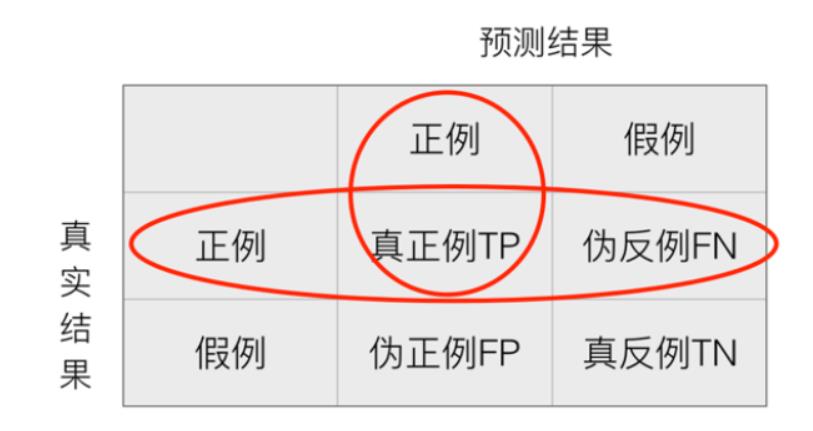
5.1.3 分类评估报告API
- sklearn.metrics.classification_report(y_true, y_pred, labels=[], target_names=None )
-
- y_true:真实目标值
- y_pred:估计器预测目标值
- labels:指定类别对应的数字
- target_names:目标类别名称
- return:每个类别精确率与召回率
print("精确率和召回率为:", classification_report(y_test, lr.predict(x_test), labels=[2, 4], target_names=[\'良性\', \'恶性\']))
假设这样一个情况,如果99个样本癌症,1个样本非癌症,不管怎样我全都预测正例(默认癌症为正例),准确率就为99%但是这样效果并不好,这就是样本不均衡下的评估问题
问题:如何衡量样本不均衡下的评估?
5.2 ROC曲线与AUC指标
ROC全称是“受试者工作特征”(Receiver Operating Characteristic)。ROC曲线的面积就是AUC(Area Under the Curve)。AUC用于衡量“二分类问题“机器学习算法性能(泛化能力)。
5.2.1 知道TPR与FPR
- TPR = TP / (TP + FN)
- 所有真实类别为1的样本中,预测类别为1的比例
- FPR = FP / (FP + FN)
- 所有真实类别为0的样本中,预测类别为1的比例
5.2.2 ROC曲线
- ROC曲线的横轴就是FPRate,纵轴就是TPRate,当二者相等时,表示的意义则是:对于不论真实类别是1还是0的样本,分类器预测为1的概率是相等的,此时AUC为0.5
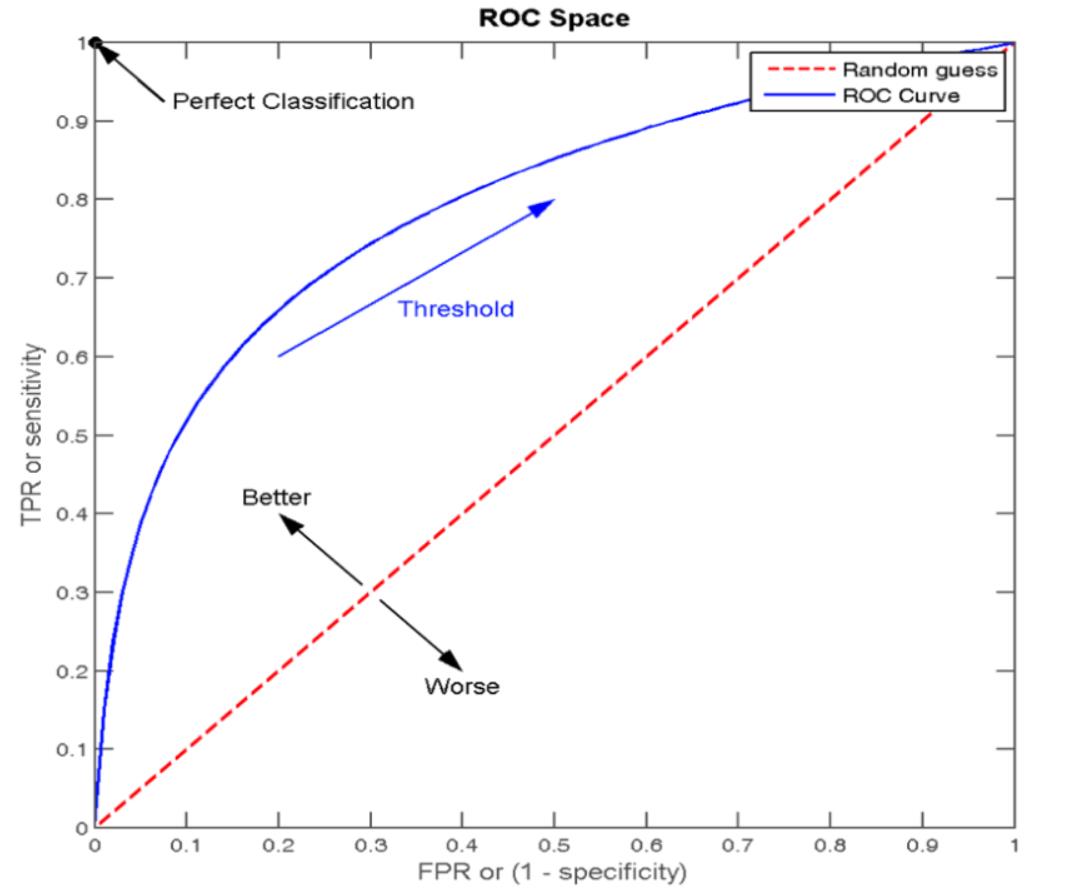
5.2.3 AUC指标
- AUC的概率意义是随机取一对正负样本,正样本得分大于负样本的概率
- AUC的最小值为0.5,最大值为1,取值越高越好
- AUC=1,完美分类器,采用这个预测模型时,不管设定什么阈值都能得出完美预测。绝大多数预测的场合,不存在完美分类器。
- 0.5<AUC<1,优于随机猜测。这个分类器(模型)妥善设定阈值的话,能有预测价值。
最终AUC的范围在[0.5, 1]之间,并且越接近1越好
5.2.4 AUC计算API
- from sklearn.metrics import roc_auc_score
- sklearn.metrics.roc_auc_score(y_true, y_score)
- 计算ROC曲线面积,即AUC值
- y_true:每个样本的真实类别,必须为0(反例),1(正例)标记
- y_score:每个样本预测的概率值
- sklearn.metrics.roc_auc_score(y_true, y_score)
# 0.5~1之间,越接近于1约好
y_test = np.where(y_test > 2.5, 1, 0)
print("AUC指标:", roc_auc_score(y_test, lr.predict(x_test)))
案例(逻辑回归进行癌症预测)
def logisticregression():
"""
逻辑回归进行癌症预测
:return: None
"""
# 1、读取数据,处理缺失值以及标准化
column_name = [\'Sample code number\', \'Clump Thickness\', \'Uniformity of Cell Size\', \'Uniformity of Cell Shape\',
\'Marginal Adhesion\', \'Single Epithelial Cell Size\', \'Bare Nuclei\', \'Bland Chromatin\',
\'Normal Nucleoli\', \'Mitoses\', \'Class\']
data = pd.read_csv("https://archive.ics.uci.edu/ml/machine-learning-databases/breast-cancer-wisconsin/breast-cancer-wisconsin.data",
names=column_name)
# 删除缺失值
data = data.replace(to_replace=\'?\', value=np.nan)
data = data.dropna()
# 取出特征值
x = data[column_name[1:10]]
y = data[column_name[10]]
# 分割数据集
x_train, x_test, y_train, y_test = train_test_split(x, y, test_size=0.3)
# 进行标准化
std = StandardScaler()
x_train = std.fit_transform(x_train)
x_test = std.transform(x_test)
# 使用逻辑回归
lr = LogisticRegression()
lr.fit(x_train, y_train)
print("得出来的权重:", lr.coef_)
# 预测类别
print("预测的类别:", lr.predict(x_test))
# 得出准确率
print("预测的准确率:", lr.score(x_test, y_test))
print("精确率和召回率为:", classification_report(y_test, lr.predict(x_test), labels=[2, 4], target_names=[\'良性\', \'恶性\']))
# 0.5~1之间,越接近于1约好
y_test = np.where(y_test > 2.5, 1, 0)
print("AUC指标:", roc_auc_score(y_test, lr.predict(x_test)))
return None
返回结果:
得出来的权重: [[1.18088011 0.17960576 0.64716029 0.84256205 0.13629304 1.40238555
1.05954948 0.68190687 0.86153865]]
预测的类别: [4 4 2 2 4 2 4 2 2 2 2 2 2 4 4 4 2 4 2 4 2 2 4 2 2 2 2 2 2 4 2 4 2 2 2 2 2
2 4 2 4 2 2 2 4 2 2 2 2 2 2 4 4 2 2 2 2 2 2 2 4 2 4 2 2 2 2 2 4 2 4 2 2 2
2 4 4 2 4 2 2 2 4 2 2 4 4 2 2 2 2 4 2 2 2 2 4 2 2 2 2 2 2 2 2 2 2 4 4 2 2
2 4 2 2 2 4 2 2 2 4 2 2 2 2 4 2 4 2 2 2 4 2 2 2 4 2 2 2 2 2 4 2 2 2 2 2 2
2 4 4 2 2 4 2 2 2 2 2 4 4 4 4 2 2 2 2 2 2 2 2 2 2 2 4 4 2 2 2 4 2 2 4 4 2
4 4 4 4 4 4 4 4 2 2 2 2 2 2 2 4 2 4 4 4]
预测的准确率: 0.9707317073170731
精确率和召回率为: precision recall f1-score support
良性 0.98 0.98 0.98 142
恶性 0.95 0.95 0.95 63
accuracy 0.97 205
macro avg 0.97 0.97 0.97 205
weighted avg 0.97 0.97 0.97 205
AUC指标: 0.965627095908786
5.2.5 小结
- AUC只能用来评价二分类
- AUC非常适合评价样本不平衡中的分类器性能
注:参考了黑马程序员的资料
以上是关于分类算法-逻辑回归与二分类的主要内容,如果未能解决你的问题,请参考以下文章